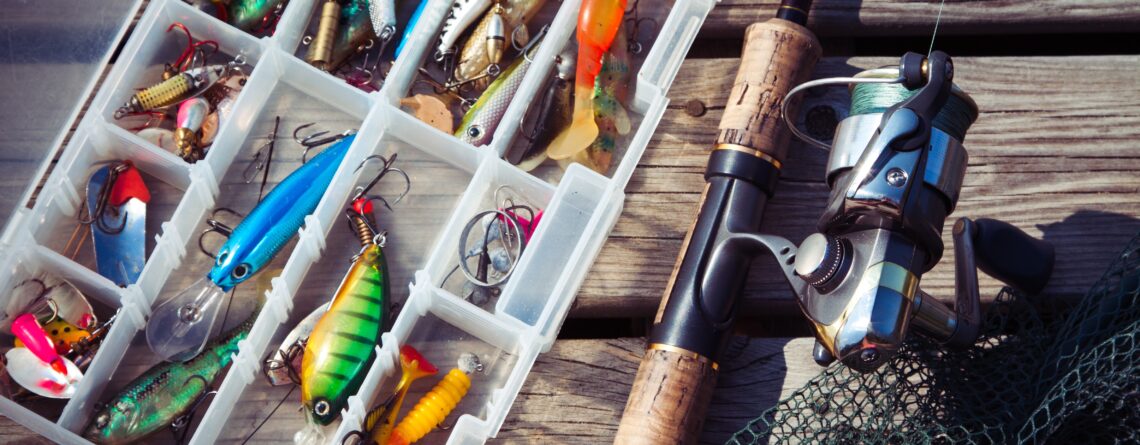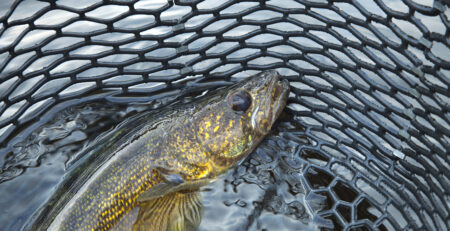Live Bait Fishing vs Artificial Lures: Which Will Increase Your Catch?
It’s the most frequently asked question among angler: which is better: Fishing with live bait or artificial lures?
Like most things in life, the answer to that question is: it depends. There really isn’t a definite answer to this age-old query. Every method of fishing has its advantages and disadvantages. The method that works the best depends on a variety of factors, such as the condition of the water, the weather, the surrounding environment, the species of fish you’re trying to catch, and your skill level. It also depends on your preference. In some situations, using an artificial lure is a better option, and in other, baiting your hook with a live offering is the better way to go.
With all of that said, if you’re wondering if live bait fishing or artificial lures will work best for your unique circumstances, let’s examine the pros and cons of each technique.
Casting with Live Bait
Because many species of game fish are carnivorous, so when you bait your hook with something you’re offering your target the food that it seeks. As such, fish will be more drawn to your hook because they see the bait on the end as food.
While it’s true that most species of game fish are more drawn to something live, that doesn’t mean that you can just bait your line, cast it into the water, and expect to make a catch every single time; you do still have to put some effort in. You need to have some background information about the species you are trying to catch so that you know which bait to use. You also need to know how to properly rig your hook and how to offer your bait in a way that will entice your target.
Types of Live Bait
Walk into a bait shop and you’re going to find that there are literally dozens of options to choose from. While you could just grab any type, if you do, you might nab your target. In order to increase your chances of success, you need to know what type of food the species you are trying to catch eats. While that varies, here’s a general overview of the most effective types of live bait for freshwater and saltwater fishing.
- Freshwater Fishing. The majority of freshwater fish eat the following type of live bait:
- Frogs
- Crickets
- Saltwater Fishing. If you’re casting your line in saltwater, try baiting your line with the following live bait:
- Mullet
- Crabs
- Shrimp
- Sardines
- Squid
- Pinfish
- Minnows
The Benefits of Live Bait Fishing
So, why should you consider baiting your hook with live lures? Here’s a look at some of the pros of live bait fishing:
- You’re offering fish something they eat. By presenting your target with something that it eats, it will be more attracted to your lure, and thus, your chance of making a catch will increase.
- The scent draws fish. Fish have an incredible sense of smell. When you put live bait in the water, your targets can smell it from miles away. When you cast a line baited with live lures, the scent will instantly attract the attention of your targets and draw them to your line.
- It’s easy. Fish – like most species – are opportunists. Live bait is an easy meal for fish; it’s just sitting there, begging for them to take the bite. Fish will take that opportunity, so you’ll nab a catch.
The Disadvantages of Live Bait Fishing
While there are many benefits to live bait fishing, that’s not to say that there aren’t any downsides. Some of the cons of this type of fishing include:
- It’s messy. Fishing with live bait can be pretty gross, to put it mildly. You’ll be sticking live beings with sharp hooks, so there’s going to be some blood, guts, and gook.
- Availability/finite. Unlike artificial lures you have to purchase fresh bait every time you run out.
- Maintenance. Live bait has to be kept alive, which can be a bit complicated and time-consuming – though I’ve meet some anglers that like this aspect of keeping their bait live and fresh.
Baiting with Artificial Lures
If you’ve ever watched a fishing competition, you’ve probably noticed that the professional anglers tend to use artificial lures (since live bait is forbidden to use most of the time). It’s an effective means of fishing, but it does take time to figure out, which can be difficult, and it does tend to be physically taxing.
Artificial lures are intended to mimic the look, sound, and movements of live bait. Like live bait, you do need to know which type of fake offering to use to attract the type of fish you are targeting. You can purchase commercial manufactured lures, or you can make them yourself. The former is obviously easier, but there’s something so satisfying about making your own lure and catching a fish with it!
Types of Artificial Lures
Like live bait, there are many different types of artificial lures. Some of the options include:
- Artificial flies
- Decoy fish
- LED lures
- Spinner bait
- Swim bait
- Spoon lures
- Floating and diving lures
- Sinking lures
If you choose the right type of lure – something that mimics the actions of the live bait your target fish eats – and you use it properly, you’ll be able to reel in a good haul.
Benefits of Artificial Lures
There are some definite benefits of fishing with artificial lures. Some of the most notable pros include:
- Unlimited Uses. You can use an artificial lure over and over again, so it can save you some money.
- It’s cleaner. There won’t be any blood, guts, or other goo to deal with.
- It’s more convenient. When you fish with artificial lures, all you have to do is grab your tackle box and you’re good to cast some lines.
Disadvantages of Artificial Lures
The downsides of fishing with artificial lures include:
- It’s difficult. It does take a lot of time and patience to figure out how to successfully fish with an artificial lure.
- It’s physically taxing. To be effective, you need to keep moving an artificial lure. This isn’t the type of fishing you do when you want to kick back and relax.
- You need to find the fish. Since artificial lures appeal to the predatory nature of fish, you need to know where their hiding, otherwise you won’t attract them. Finding the fish can be difficult.
Which One is Better?
As we said from the start, it really depends on your unique situation (at least it’s not as difficult as choosing a gift for your fishing buddies). However, with that said, if you’re a novice angler or you want to have a more relaxing experience, fishing with live bait is probably a better option. If you’re more experienced and you want to be more actively involved, artificial lures are a great way to go. l





Comments (3)
Good information. Especially about using artificial baits and their drawbacks.
Thank You very much
I often use both. I make my own jigs and tip them with nightcrawlers of minnows.